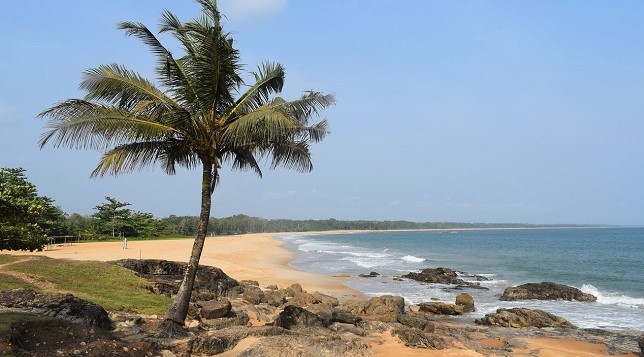Côte d’Ivoire has erected the greater city of Grand-Béréby as the country’s first Marine Protected Area (MPA), according to Dr. Joseph Séka Seka, the Ivorian Minister of Environment and Sustainable Development, on behalf of the nation’s Prime Minister.

A Marine Protected Area (MPA) is a marine area (coastal and offshore) that is established to protect the natural, cultural, social and economic resources of a particular place.
The MPA was so designated at a ceremony hosted by the Prime Minister of Côte d’Ivoire, Hamed Bakayoko, on Monday, December 21, 2020 in the presence of Philippe Légré, Minister in charge of Maritime Affairs, representative for the Ministry of Tourism and Leisure; Ambassador Maria Leissner, representing the Swedish government; Mr. Philippe Poinsot, resident coordinator of the United Nations system in Côte d’Ivoire; as well as the administrative authorities of the region.
Mr. Abou Bamba, Executive Secretary of the Abidjan Convention, said: “It is with great satisfaction that we are witnessing this event which will forever change the history of our country. This Grand Béréby MPA will unlock the region’s economic potential and contribute to the economic development of the country.”
Ambassador Lessner expressed her joy on the achievement for the country and laid emphasis on women’s active participation, saying: “The inclusion of women is very important in this project and is in line with the priorities of the Swedish government.”
The Abidjan Convention said it welcomes the “historic event which marks the start of a new era in conservation in Côte d’Ivoire”.
“The result of over seven years of work under the coordination of the Abidjan Convention supported by its financial partners, the Grand-Béreby MPA, is an example of a mutually beneficial partnership that combines the needs of local communities and the need to conserve biodiversity in an area known to be a nesting area for sea turtles and migration of mammals,” disclosed the UN Environment Programme (UNEP) body.
It disclosed that, since 2018, it had carried out study and assessment missions with the main support of the Swedish government and proposed the creation of a network of five Marine Protected Areas, which are listed to include: (i) the mouth of the Cavally river between Côte d’Ivoire and Liberia, (ii) Grand-Bereby, (iii) Azagny National Park, (iv) the Côte d’Ivoire-Ghana cross-border coastal zone, and (v) the Dassioko classified forest in the region of Grand-Lahou.
Vanessa Ahouadjiro, the Abidjan Convention spokesperson, disclosed in a statement: “The identification of these five sites is a response to a desire to ensure that each region located on the Ivorian coast has at least one marine protected area under conditions allowing for shared management of marine and coastal resources located at the maritime borders between the Côte d’Ivoire and its neighbours Liberia and Ghana.”
According to her, the Marine Protected Area of Grand-Béréby covers a total area of approximately 2,600 km² on the Ivorian coast ranging from Kablaké Wapo in the west to Petit Digboué in the east of the region including the villages of Pitiké, Mani, Roc, Dawa, Ouro, Dosso, Takoro and Ménolé.
Its mission, added Ahouadjiro, is to ensure the conservation of the region’s ecological and genetic diversity (turtles, sharks, sea birds), the promotion of scientific research, education and recreation, the development of ecotourism, sustainable fishing and the self-promotion of communities bordering the protected area.
“The Protected Marine Area of Grand-Béréby comes as a gift not only to the population of the region, but also to world, on the evening of the end of the year celebrations,” she stated.
Abidjan Convention – or fully referred to as the Convention on Cooperation in the Protection, Management and Development of the Marine Environment and Coastal Areas of the Atlantic Coast and of the West, Central and South Africa Region Sud – is a regional seas programme of UNEP.
It constitutes the overall legal framework for any programme related to the marine and coastal environment as well as the marine resources of the Atlantic side of Africa.
